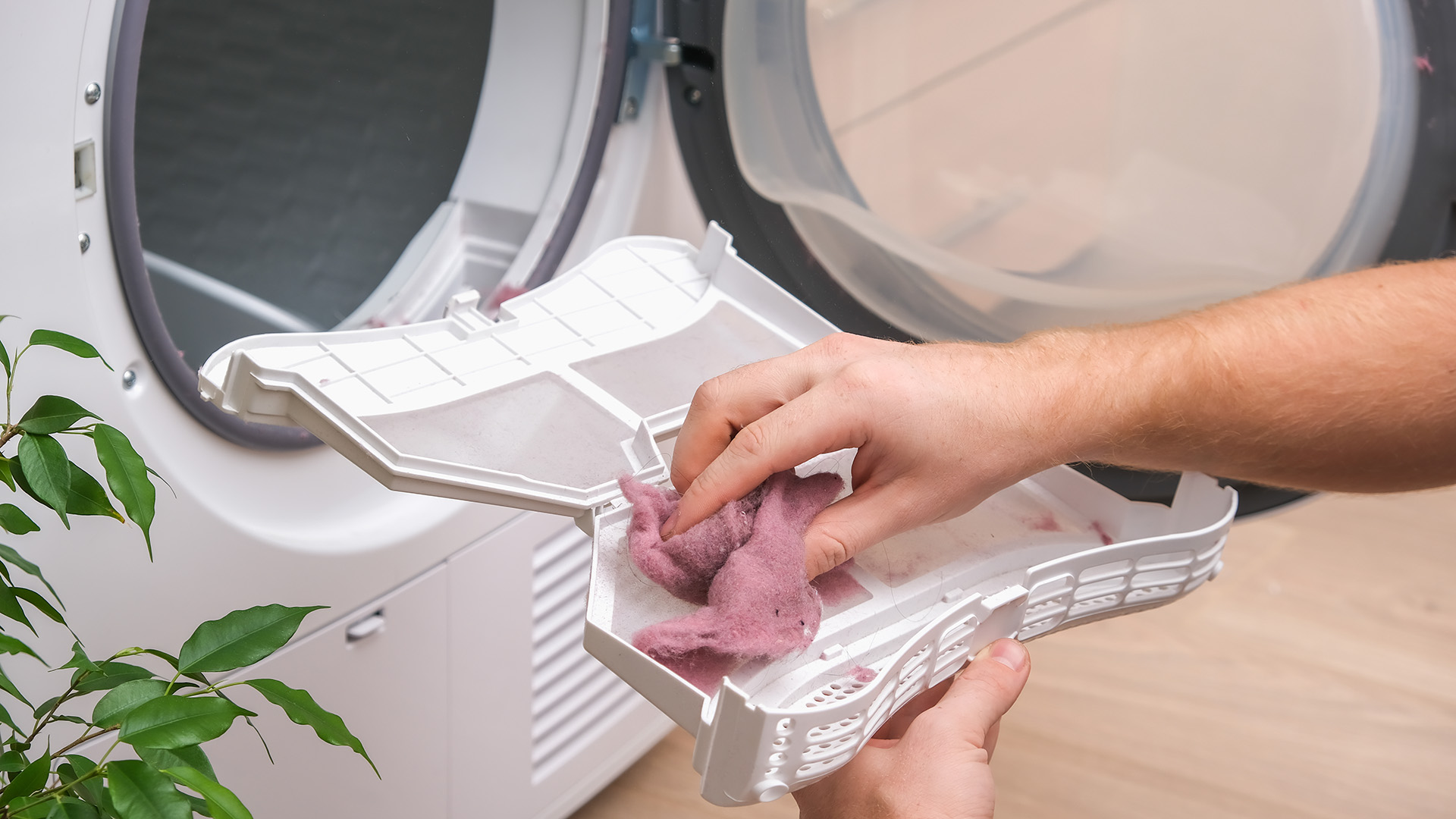Knowing how to remove lint from a washing machine is important to preserve the longevity of your machine as well as keep your clothes from smelling moldy. In addition to hygiene problems, lint can also pose a serious fire hazard for some washer-dryer machines, so it's an important chore to factor into your routine. Removing the lint frequently can help prevent these issues and will keep your washing machine hygienic and functioning well.
The best front load washers and the best top load washers are essential to keeping your laundry piles relatively low and maintaining a well-run household, but frequent use of your washing machine is bound to lead to a build-up of lint. Luckily, removing lint is very quick and easy if you know how which is important when incorporating another element into your cleaning schedule.
If you want to know how to clean your washing machine, then lint removal is always an important step before the cleaning process. By removing the lint, you are making sure that your washing machine is ready for your next load of washing.

Luke Gammons is a third-generation owner of Wades Group Ltd, a home appliance store established in 1918. Luke has been installing and maintaining washing machines for over 20 years and has an extensive online presence in this field, giving advice on TikTok to over 28,000 followers.
How to remove lint from a washing machine
What you will need
To remove lint from a washing machine, you will need some basic equipment. You will also need your washing machine manual so that you can find your lint filter.
To clean the filter:
• Rubber gloves
• A strong bristled brush or an old toothbrush
• Some liquid dish soap
• Hot water
To clean the drum:
• White vinegar
• Baking soda
• Hot water
Once you have all of your equipment ready, you can begin the process of removing lint from your washing machine.
1. Locate your lint filter
First, you will need to clean your filter. Find your washing machine manual and locate your lint filter.
2. Soak the filter in hot water and detergent
Once you have located the filter, mix hot water with liquid dish soap, submerge the filter entirely, and let it soak for around 10 minutes. The dish soap will help to break down any residue on your filter and will increase its efficiency overall. It will also help to remove any smaller pieces of lint which can eventually build up and stick to your clothes.
3. Scrub and rinse the lint filter
Give the lint filter a thorough scrub with a stiff-bristled brush or an old toothbrush, and rinse off any excess lint or residue with hot running water.
4. Run a cleaning cycle
Run a cleaning cycle of your washing machine with only water. Do not use any laundry detergent or chemicals, as they can cause a residue build-up, which causes lint to stick to the components of your washing machine.
5. Put vinegar and hot water in the drum
Add 4 cups of vinegar to boiling water. While the water is still hot, pour half of it into your machine's drum and splash the other half around the drum.
6. Add baking soda to the drum and run another cleaning cycle
Add half a cup of baking soda to the drum and run another cleaning cycle at a hot temperature. The baking soda and vinegar will react and break down the gunky residue that causes lint to stick and build up.
7. Check your lint filter again
If the baking soda and vinegar method were successful, there should be a small amount of residual lint on your lint filter. Clean the filter with a brush, and your washing machine will be free from lint. If your washing machine still has some lint, then repeat the cleaning cycle with more vinegar and baking soda.
How to prevent future lint build up
The best way to prevent future lint build-up is by washing different fabrics separately. Some clothes and linens will be rougher than others, which can cause a lint build-up during the washing process due to the friction generated from them rubbing together. If you wash them separately, then this will eliminate this problem and reduce the amount of lint build-up. Following a laundry symbols guide will make it easy to understand exactly what cycles are best for different items.
Regularly using fabric softener can also help as it will soften fabrics and reduce friction within the wash cycle. Alternatively, you can add baking soda and vinegar to empty wash cycles to help loosen any lint that starts to gather in the components.
Why removing lint from your washing machine is important
Removing lint from your washing machine is important for a number of reasons. If you have a large build-up of lint, then your washing machine can become a breeding ground for mold and mildew, which can cause foul odors to develop that then stick to your clothes. Lint can also cause bacteria to grow in your washing machine, which can be potentially harmful or irritating to the body.
Additionally, if you have a washer-dryer machine, then lint can pose a serious fire hazard, as it's highly flammable and exposed to components that can get very hot during the drying process.

